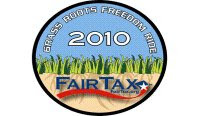The following was submitted by a FairTax volunteer. Just goes to prove that statistics can be manipulated for your own means:
During the American Enterprise Institute's February28, 2007 program on "Taxing Sales Under the Fair Tax: What Rate Works?" one development demonstrated that the conclusion of the Beacon Hill Institute and Kotlikoff is to be adopted to the exclusion of Gale's.
The background is as follows. William Gale had published a paper in Tax Notes on May16, 2005 contending that the replacement rate necessary for a national sales tax along the lines of a Fair Tax would be 31% tax-inclusive, 44%tax-exclusive. Before coming to the seminar, Gale had reduced his rate requirement to 28.2% tax-inclusive,39.3% tax-exclusive.
The Beacon Hill Institute of Suffolk University Team, in collaboration with Boston University's Laurence J.Kotlikoff, using Gale's methodology, published its own paper in Tax Notes over one year following the Gale paper on November 13, 2006. In their paper Beacon Hill concluded that the Fair Tax revenue replacement rate would be 23.82% tax-inclusive, 31.27% tax-exclusive.
With minimal spending reductions on the non-Social Security side of the government spending ledger, the 23% tax-inclusive rate would put the government in the same surplus-deficit position as it is today. Kotlikoff, who with David G. Tuerck argued his and Beacon Hill's position at the seminar, presented a detailed reconciliation of how their analysis resulted in a lower rate than Gale's, using the same methodology. The presentation showed, item-by-item, where Gale's revenue base was understated, and where Gale's required revenue was overstated.
In the discourse that followed, Gale admitted that he could not account for the difference between his rate and Beacon Hill's. After some perfunctory remarks rejecting certain possibilities, Gale dismissed the problem with the statement that the "difference must be in the weeds. "Gale should have combed through the Kotlikoff-Beacon Hill "weeds" before coming to the seminar. Gale had at least three months before the seminar to do so, and he knew that his own thesis had been challenged and would be challenged further.
The analysis that would have been required from an economist such as Gale would not have been difficult because the Kotlikoff paper used Gale's methodology. The data was government data, to which Gale had ready access. As of today, Gale still has not explained why his figures differ from Kotlikoff's and Beacon Hill's. I submit that he has not done so because he cannot.
Subscribe to:
Post Comments (Atom)

1 comment:
Yes - statistics sure ARE what you want them to be. We all suffer from that, its very human tendency, and very strong.
If you dont realize you have the tendency -- and work against getting conned by it - then you are almost surely conned by it.
The FAIRTAX has wondeful statistics. I wish it would work. I wish people would take home their entire paychecks, while prices wouldnt go up at all, cause the 23% Fairtax would replace the embedded tax you removed.
Sounds suspiciously like a free lunch, however.
Post a Comment